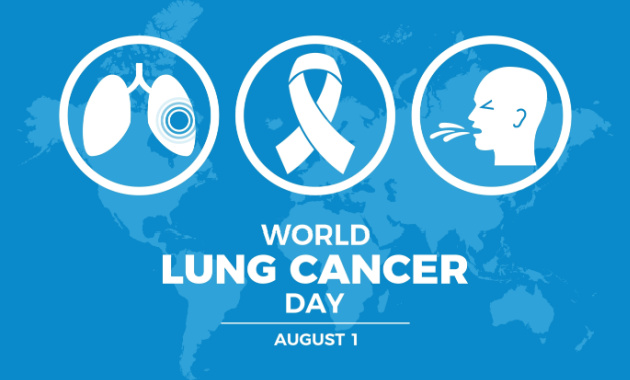
On World Lung Cancer Day, we come together to recognize the importance of raising awareness about lung cancer and the continuous efforts to improve its treatment options. Lung cancer is a serious health concern affecting millions of people worldwide. However, there have been significant advancements in lung cancer treatment that offer hope to patients and their families. In this article, we will explore some of the recent breakthroughs in lung cancer treatment, along with their potential benefits and drawbacks.
1. Immunotherapy
Immunotherapy is an innovative approach in the treatment of lung cancer that aims to enhance the body’s natural defenses against the disease. Unlike traditional treatments like chemotherapy and radiation, which directly target cancer cells, immunotherapy boosts the immune system’s ability to recognize and destroy cancerous cells.
Pros: Immunotherapy has shown remarkable success in certain types of lung cancer. It involves drugs that block specific proteins called checkpoints, which prevent immune cells from attacking cancer cells. By blocking these checkpoints, immunotherapy allows the immune system to recognize and destroy cancer cells effectively.
Cons: Immunotherapy shows potential, but it may not be effective for all patients. Some people may experience side effects, ranging from mild to severe, as the immune system becomes overactive and attacks healthy cells. However, these side effects can be controlled with appropriate medical treatment [1].
2. Targeted Therapy
Targeted therapy is another significant advancement in lung cancer treatment, where drugs are used to specifically target and inhibit the growth and division of cancer cells by focusing on their genetic mutations or proteins.
Pros: Targeted therapies are designed to be more precise and cause fewer side effects compared to traditional chemotherapy. They have shown impressive results in patients with specific genetic mutations. Targeted therapy allows for personalized treatment based on a patient’s unique tumor characteristics, leading to improved outcomes.
Cons: Targeted therapies for lung cancer only work for some patients with specific genetic mutations. Furthermore, cancer cells can become resistant to these therapies, so other treatment options need to be considered [2].
3. Radiation Therapy
Radiation therapy is a well-established treatment for lung cancer. Recent advancements in radiation technology have further improved its precision and effectiveness.
Pros: Stereotactic body radiation therapy (SBRT) is a precise type of radiation treatment that delivers concentrated doses of radiation to tumors. This method is beneficial because it requires fewer treatment sessions and minimizes radiation exposure to healthy tissues. SBRT has been particularly effective for patients with early-stage lung cancer who cannot undergo surgery.
Cons: Radiation therapy can cause side effects, such as fatigue, skin irritation, and difficulty swallowing, depending on the treatment area. However, these side effects are generally temporary and manageable. Radiation therapy is usually used in combination with other treatment modalities, such as surgery or chemotherapy, to provide the best chances of success[3].
4. Combination Therapies
Combination therapies involve using different treatment modalities simultaneously or sequentially to improve treatment outcomes.
Pros: Combining treatments like immunotherapy with chemotherapy or targeted therapy has shown promising results. These combinations work synergistically to enhance the immune response against cancer cells while targeting specific genetic alterations. Combination therapies have led to improved response rates and survival outcomes in some patients.
Cons: Combining different treatments may lead to more side effects due to the potential adverse effects of each treatment. It is important to closely monitor and manage these side effects to achieve the best outcome for the patient[4].
Final takeaway
World Lung Cancer Day is a reminder of the progress in lung cancer treatment and the ongoing efforts to find better solutions. Immunotherapy, targeted therapy, radiation therapy, and combination therapies have improved the quality of life for many patients. However, not all treatments work for everyone and may have side effects. Treatment decisions should be made with a healthcare team, considering each patient’s circumstances. Let’s continue to support research and raise awareness to provide hope for those affected by lung cancer. With ongoing advancements and global collaboration, we move closer to a brighter future in the fight against lung cancer.
(The article is reviewed by Monalisa Deka, Senior Health Content Editor)
References
1. National Cancer Institut. Immunotherapy to Treat Cancer. Updated on 24th Sep.2019.
https://www.cancer.gov/about-cancer/treatment/types/immunotherapy
2. National Cancer Institute. Targeted Cancer Therapies. Updated on 31st May 2022. https://www.cancer.gov/about-cancer/treatment/types/targeted-therapies
3. American Cancer Society. (2021). Radiation Therapy for Lung Cancer. Getting External Beam Radiation Therapy. Updated on 13th Feb. 2023.
https://www.cancer.org/cancer/managing-cancer/treatment-types/radiation/external-beam-radiation-therapy.html
4. Combination Therapy For Lung Cancer Treatment .Lung Cancer Foundation Of America. Available online:https://lcfamerica.org/lung-cancer-info/treatment/combination-therapy/